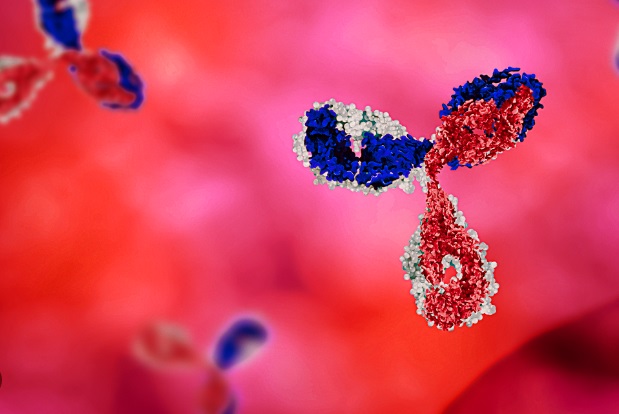Nikhil Prasad Fact checked by:Thailand Medical News Team Feb 13, 2025 2 months, 4 days, 17 hours, 21 minutes ago
Medical News: A new study suggests that anti-HLA antibodies, known for their role in transplant rejection, may actually be a subset of polyreactive immunoglobulins generated after viral superinfection. Researchers from Frontage Laboratory in Exton, Pennsylvania-USA, and Generation Biotech in Princeton, New Jersey-USA, explored this connection, aiming to uncover how these antibodies develop in the absence of traditional triggers such as blood transfusions, pregnancies, or organ transplants.
 American Study Finds That Viral Superinfection Can Trigger Anti-HLA Antibodies
American Study Finds That Viral Superinfection Can Trigger Anti-HLA Antibodies
For years, medical experts have studied the formation of anti-HLA antibodies, which attack transplanted organs, leading to chronic rejection and reduced survival rates. Traditional understanding holds that these antibodies form due to exposure to foreign HLA proteins, often introduced through pregnancy, transfusion, or organ transplantation. However, this
Medical News report highlights emerging evidence that suggests viral infections, particularly superinfections, could be another key factor in their development.
How Viral Superinfection May Trigger Anti HLA Antibodies
Superinfection occurs when a person who is already infected with one virus is later infected by a second, different virus. This phenomenon can change immune system responses and lead to unexpected antibody production. The researchers developed an innovative computational model called NETRAD to analyze viral peptide components that resemble HLA structures. Using this model, they identified viral proteins that could potentially stimulate the immune system to produce anti-HLA antibodies.
One of the most important findings of the study was the identification of 215 viral peptides from 14 different virus pairs that closely mimic HLA proteins. Among these, Epstein-Barr Virus (EBV), a virus known to infect over 90% of the population, was found to play a crucial role. The study suggests that when EBV infects the body alongside another virus, the immune system may mistakenly generate antibodies that cross-react with HLA proteins, leading to transplant rejection risks.
Unraveling the Molecular Mechanism Behind This Phenomenon
The study provides a deeper understanding of how viral infections might lead to anti-HLA antibody formation. Researchers discovered that post-translational modifications (PTMs) in viral proteins can make them more likely to resemble HLA proteins. These modifications occur when the body is under stress, such as during ischemia-reperfusion injury, which often happens after a transplant.
The NETRAD model revealed that when viral components undergo PTMs, they create new epitopes - specific parts of the antigen that antibodies recognize and attack. These newly formed epitopes closely resemble HLA structures, triggering the production of anti-HLA antibodies.
Interestingly, these antibodies often appear months or even years after a transplant, which could explain cases of late-onset rejection that were previously difficult to understand. The study suggests that stress-induced
viral reactivation may be a key driver of this delayed immune response, potentially altering how transplant patients are monitored over time.
Implications for Transplant Patients and Future Research
This discovery has major implications for the medical field, particularly in organ transplantation. Current diagnostic tests for transplant compatibility primarily focus on direct HLA mismatches and donor-specific antibodies (DSA). However, if viral infections contribute to anti-HLA antibody production, these tests may not provide a complete picture of a patient’s immune risk.
By identifying specific viral infections that lead to anti-HLA antibody development, medical teams could better assess transplant risks and develop improved treatment strategies. For example, early detection of certain viral infections in transplant patients could lead to targeted antiviral therapies, potentially reducing the likelihood of chronic rejection.
Additionally, the study raises questions about the role of vaccinations in transplant patients. Some reports have linked flu vaccinations to increased anti-HLA antibody formation, suggesting that immune system activation through vaccination may contribute to this process. More research is needed to determine whether certain vaccines pose a higher risk of triggering these immune responses in transplant recipients.
Future Directions and Potential Clinical Applications
Moving forward, researchers aim to validate the NETRAD model through experimental studies involving transplant patients and healthy individuals. If confirmed, this model could revolutionize the way doctors predict and prevent transplant rejection by integrating viral infection history into patient evaluations.
The study also opens the door to new therapeutic approaches. By blocking the immune response to these HLA-mimicking viral peptides, scientists may be able to develop treatments that reduce the risk of antibody-mediated rejection without the need for excessive immunosuppression. This would be a major advancement in improving transplant outcomes and extending organ survival rates.
Conclusion
The findings of this study challenge traditional beliefs about the origins of anti-HLA antibodies and suggest that viral superinfection plays a significant role in their development. The discovery of viral proteins that mimic HLA structures provides a new perspective on chronic transplant rejection and could lead to better diagnostic and therapeutic strategies for transplant patients.
As medical research advances, understanding the connection between viral infections and the immune system will be crucial for improving organ transplant success rates. The ability to identify and mitigate these risks before they lead to organ rejection represents a promising step forward in the field of transplant medicine.
The study findings were published in the peer-reviewed journal: Transplant Immunology.
https://www.sciencedirect.com/science/article/pii/S0966327425000255
For the latest on Anti-HLA Antibodies, keep on logging to Thailand
Medical News.
Read Also:
https://www.thailandmedical.news/news/study-finds-that-30-percent-of-human-anti-glycan-antibodies-fail-to-activate-the-complement-system
https://www.thailandmedical.news/news/more-than-50-percent-of-individuals-exposed-to-covid-19-will-develop-antiphospholipid-autoantibodies
https://www.thailandmedical.news/news/study-shows-that-individuals-who-have-recovered-from-covid-19-are-more-likely-to-develop-antinuclear-antibodies
